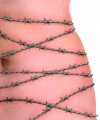Myths and misconceptions in endometriosis
by Ros Wood, Heather Guidone, and Lone HUmmelshoj
Gender issues and the complex nature of endometriosis have led to the unfortunate creation of too many myths and misconceptions about a disease which affects an estimated 176 million women (and their families) worldwide.
Here are the facts about endometriosis – and let’s dispel some myths as well!
Endometriosis is difficult to understand
 From a woman’s perspective, endometriosis is a disease surrounded by taboos, myths, delayed diagnosis, hit-and-miss treatments, and a lack of awareness, overlaid on a wide variety of symptoms that embody a stubborn, frustrating and, for many, painfully chronic condition.
From a woman’s perspective, endometriosis is a disease surrounded by taboos, myths, delayed diagnosis, hit-and-miss treatments, and a lack of awareness, overlaid on a wide variety of symptoms that embody a stubborn, frustrating and, for many, painfully chronic condition.
It affects these women and girls during the prime of their lives and through no personal failing in lifestyle choices.
These individuals’ physical, mental, and social well-being is impacted by the disease, potentially affecting their ability to finish an education, maintain a career, with a consequent effect on their relationships, social activities, and in some cases fertility. About half of women with endometriosis will also suffer from pain associated with sexual intercourse.
Access to timely diagnosis and treatment for this large population of women and girls should not be impacted by the myths and mis-conceptions that, unfortunately, remain at large.
→ 7 year delay from presenting with symptoms to diagnosis and treatment
Severe period pain is not normal
 ‘Women’s problems’ perplexed nineteenth century doctors, who saw them as indicative of women’s unstable and delicate psychological constitutions.
‘Women’s problems’ perplexed nineteenth century doctors, who saw them as indicative of women’s unstable and delicate psychological constitutions.
Even though attitudes towards women have improved during the twentieth century, some of the old beliefs still linger unconsciously, and affect the medical profession’s attitudes towards women’s complaints, including period pain.
As a result, while seeking help for their pelvic pain (which may occur apart from menses), many women with endometriosis are told that their (often severe) period pain is ‘normal’, ‘part of being a woman’, or ‘in their head’. Others are told that they have ‘a low pain threshold’, or are ‘psychologically inadequate’.
The net is that if pain interferes with daily life (going to school/work, partaking in day-to-day activities) it is not normal.
If pain interferes with your day-to-day life, please seek help and ask to be investigated to determine the cause of your pain.
→ Women’s productivity at work severely impacted by endometriosis
→ Long-term effect on physical, mental, and social well-being
No-one is too young to have endometriosis
![]() Far too many doctors still believe that endometriosis is rare in teenagers and young women.
Far too many doctors still believe that endometriosis is rare in teenagers and young women.
Consequently, they do not consider a diagnosis of endometriosis when girls and young women come to them complaining of symptoms like period pain, pelvic pain and painful intercourse.
Unfortunately, this belief is a carry-over from earlier times. Before the introduction of laparoscopy in the 1970s, endometriosis could only be diagnosed during a laparotomy, major surgery involving a 10–15 cm incision into the abdomen. The risks and costs of a laparotomy meant it was usually done only as a last resort in women with the most severe symptoms who were past childbearing age. Because only women in their 30s or 40s were operated on, the disease was only found in women of that age. Subsequently ‘the fact’ arose that endometriosis was a disease of women in their 30s and 40s.
It was only with the introduction in the 1970s and 80s of laparoscopy to investigate women with infertility problems that gynaecologists began diagnosing the disease in women in their late 20s and early 30s, the age group being investigated. So, they revised the typical age range for endometriosis down to the late 20s and early 30s. Again, they did not consider that they might be ‘finding’ it because they were ‘looking’ for it.
The realisation that endometriosis could be found in teenagers and young women came about as a result of research by the national endometriosis support groups in the mid 1980s, which caught the attention of some eminent gynaecologists in the 1990s. Dr Marc Laufer of the Children’s Hospital Boston conducted studies of teenagers with chronic pelvic pain. One of his studies showed that adolescents whose chronic pelvic pain was not alleviated by an oral contraceptive pill and a non-steroidal anti-inflammatory drug like Ponstan had a high prevalence of endometriosis—as high as 70% [1].
Most recently the Global Study of Women’s Health, conducted in 16 centres in ten countries, showed that two thirds of women sought help for their symptoms before the age of 30, many experiencing symptoms from the start of their first period [2].
Teenagers and young women in their early 20s are not too young to have endometriosis – in fact, most women experience symptoms during adolescence, but unfortunately don’t get diagnosed and treated until they are in their 20s or 30s.
→ Is endometriosis all in your head?
Hormonal treatments do not cure endometriosis
 Synthetic hormonal drugs like the pill, progestins, Danazol, and GnRH-analogues have been used for many years to ‘treat’ endometriosis.
Synthetic hormonal drugs like the pill, progestins, Danazol, and GnRH-analogues have been used for many years to ‘treat’ endometriosis.
However, these hormonal treatments do not have any long-term effect on the disease itself. They do temporarily suppress (quieten) the symptoms, but only while the drugs are being taken. Once use of the drugs ceases, symptoms more often than not return.
This means that hormonal treatments do not have a role in treating (eradicating) endometriosis. If eradication of the disease is desired, surgery performed by a gynaecologist with extensive knowledge and experience of the specialised techniques used for endometriosis is the only effective medical treatment.
It also means that hormonal treatments should not be used to improve women’s chances of conceiving. Not only do they have no effect on the disease itself, but they also reduce the time available to conceive, because conception is not possible while on the drugs. If treatment is needed for infertility, surgery by a specialist gynaecologist is imperative.
Pregnancy does not cure endometriosis
Fortunately, the myth that pregnancy cures endometriosis is slowly disappearing.
However, it is not disappearing fast enough! The reality is that pregnancy—like hormonal drug treatments—may temporarily suppress the symptoms of endometriosis but does not eradicate the disease itself. Therefore, symptoms usually recur after the birth of the child. Some women can delay the return of symptoms by breastfeeding, but only while the breastfeeding is frequent enough and intense enough to suppress the menstrual cycle.
Endometriosis is not endometrium
Too many papers, online “resources”, and press articles refer to endometriosis as “endometrium (the lining of the uterus/womb outside of the uterus/womb”. This is not correct. Specialist investigators in endometriosis all agree that “endometriosis occurs when endometrium-like tissue is found outside the uterus” [3].
Endometriosis does not “equal” infertility
Too many young women are given the impression that having endometriosis invariably means that they will become infertile. This is not the case, and most women with endometriosis do go on to have children.
Unfortunately, there are no reliable statistics that indicate what percentage of women with endometriosis have no problems having children, have difficulties but eventually succeed, or never succeed. Therefore, it is impossible to give women a reliable indication of their chances of having fertility problems. However, in general, it is believed that the likelihood of fertility problems increases with the severity of the disease and, as in women without endometriosis, with age.
It is generally believed that 60–70% of women with endometriosis are fertile. Furthermore, about half the women who have difficulties with getting pregnant do eventually conceive with or without treatment.
→ Endometriosis and (in)fertility
Infertility is not just caused by endometriosis on the tubes
The statement that scarring of the fallopian tubes due to endometriosis is a common cause of infertility is appearing more and more frequently in lay publications. The authors of such publications are usually people who have very little understanding of the condition and are probably confusing the causes of endometriosis-associated infertility with those of pelvic-inflammatory-disease-associated infertility. Pelvic inflammatory disease is an infection that damages or blocks the fallopian tubes. It causes infertility by preventing movement of the egg and sperm through the tube.
In contrast, tubal endometriosis is less common and does not always cause infertility [4].
The mechanisms by which endometriosis causes infertility are still largely unknown, despite years of research. It may be years or even decades before the riddles of endometriosis infertility and sub-fertility are solved.
Hysterectomy does not cure endometriosis
Endometriosis is defined as “endometrial-like tissue outside the uterus”.
Removing the uterus and/or the ovaries without removing the endometriotic implants outside of the uterus will not get rid of the symptoms of endometriosis.
→ Hysterectomy for endometriosis
→ The UN-hysterectomy
Endometriosis is physiological – not emotional
 “Emotional complications” are not the origin of endometriosis.
“Emotional complications” are not the origin of endometriosis.
Endometriosis is a disease which is rooted in very real, highly complex hereditary, epigenetic, and molecular underpinnings – a truly multi-factorial, physiological disease.
Women with endometriosis may struggle with the emotional distress brought on by the unrelenting symptoms of pain and infertility, but such emotions are a result of the impact of the disease – they don’t cause the disease.
→ Causes of endometriosis
→ Effect on physical and mental well-being due to endometriosis
→ Endometriosis is not all in your head!
Abortion does not cause endometriosis
There is no scientific evidence linking abortion and consequently developing endometriosis. Those who claim otherwise may be confusing “endometriosis” with “endometritis“.
Douching does not cause endometriosis
There is no scientific evidence linking douching and consequently developing endometriosis. Those who claim otherwise may be confusing “endometriosis” with “endometritis“.
Facts about endometriosis
The World Endometriosis Society and World Endometriosis Research Foundation have published Facts about endometriosis.
References
- Propst AM and Laufer MR. Endometriosis in adolescents. Incidence, diagnosis, and treatment. J Reprod Med 1999;44(9):751-8.
- Nnoaham KE, et al. Impact of endometriosis on quality of life and work productivity: a multicenter study across ten countries. Fertil Steril 2011;96(2):366-73.
- Giudice LC. Clinical practice Endometriosis. N Engl J Med.2010;362(25): 2389–2398.
- Macer ML and Taylor HS. Endometriosis and infertility: a review of the pathogenesis and treatment of endometriosis-associated infertility. Obstet Gynecol Clin North Am 2012;39:535-49.






